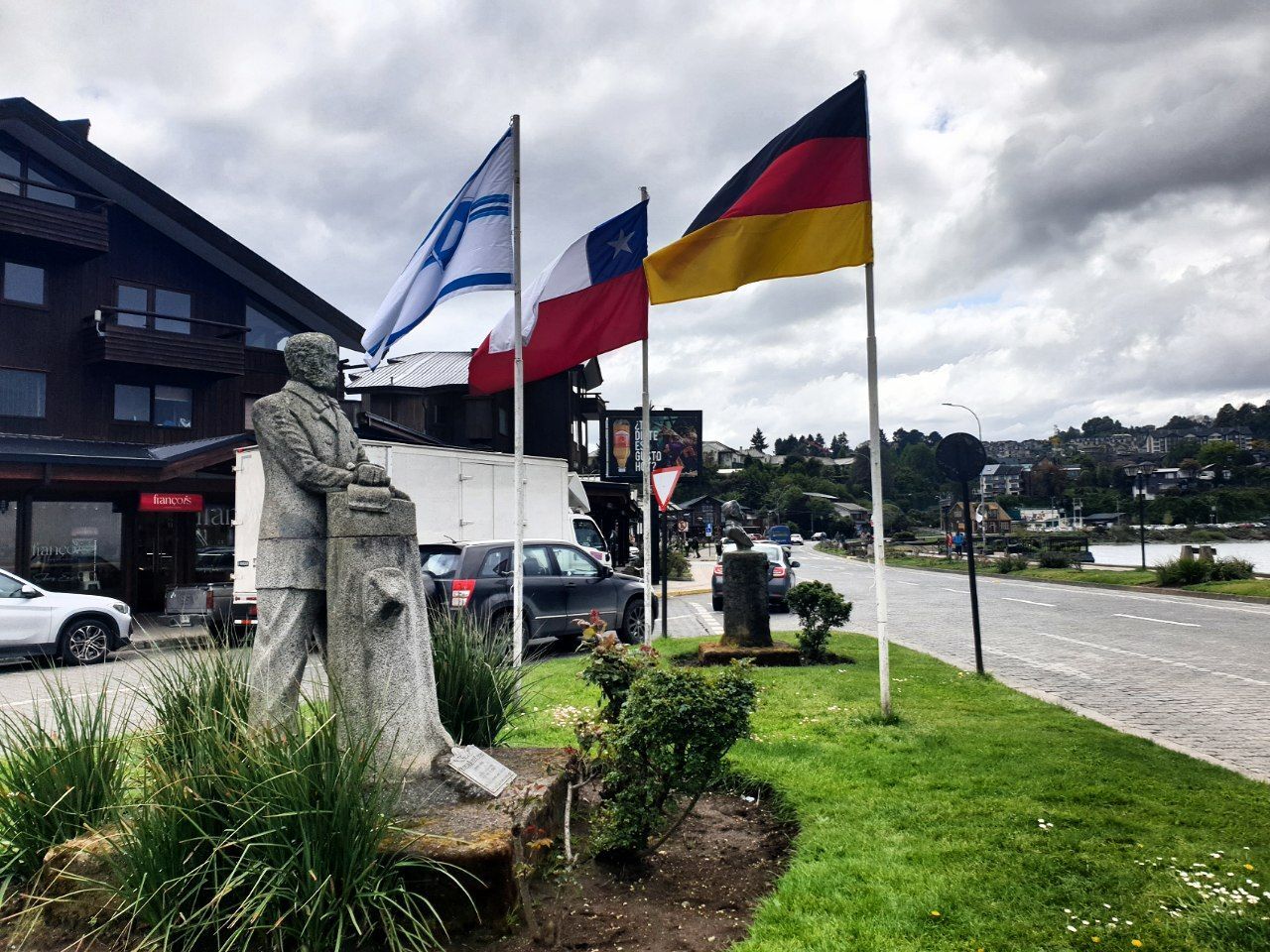A German flag in the square, Gothic font in the branding, Chilean Kunstmann beer in every pub, and kuchen in every café. Welcome to southern Chile, which is still South America, but with a distinct German flavor.
German influence took root in this former Spanish colony when Chile gained independence and embarked on its journey as an independent state. In the 19th century, foreign trade diversified, and the shipping route from Valparaíso to Hamburg became one of the main ones. Merchants from Germany became typical expats in Chile, shaping life around their own customs.
Around the same time, the young Chilean government decided it was time to develop the south, and active settlement began in the areas where I currently live—the surroundings of Lake Llanquihue and the Osorno Volcano.
The Germans eagerly joined in the colonization of the region. The idea was to attract people from Germany with an education and social capital at or above the middle class, to foster rapid regional development. Interestingly, Germany today is actively attracting economically promising migrants to reverse the trend of stagnation and economic decline.
There were also KPIs related to religious affiliation, and Bernhard Eunom Philippi (the initiator and leader of the recruitment process) was even reprimanded for bringing too many Protestant families instead of Catholics. He was appointed governor of the more southern Chilean region of Magallanes, where a few years later, he was killed by local tribes. He had originally planned to lead immigration in the Lake Llanquihue area.
In this region, relations between immigrants and the Mapuche were mostly positive (though not always). Germans actively traded with local tribes, and there were fewer problems compared to dealing with the old Spanish-speaking elite. German immigration initially concentrated in Valdivia. Some immigrants stayed in the city, opening nearby businesses, while others ventured out to farm the land. The bulk of the immigrants were artisans, farmers, and merchants, so small businesses sprung up everywhere and soon turned into larger enterprises. Even Chile's largest retailer, Cencosud (the very same Jumbo and much more), grew out of a small shop owned by a German immigrant in Temuco. That was part of a later wave of migration, but there are many similar examples.
The colonization along the shores of Llanquihue was taken over by Vicente Pérez Rosales. As a result, around 30,000 Germans came to Chile as part of this project. The national park near the Osorno Volcano, one of the oldest and most visited in Chile, is named after Rosales. He also wrote a book where he describes his adventures and the historical events of Chile through his experiences. It's called *Recuerdos del pasado* ("Memories of the Past"), and now I’m planning to hunt for it in a bookstore.
Chile’s history also has its share of fugitive Nazis. For example, Walter Rauff, recognized as a war criminal, actively shared his experience in repression during the Pinochet regime. But more on that another time. For now, let's focus on the German-Chilean architecture of the south, delicious beer, schools, businesses, and many other things that make up the positive legacy of German immigrants.
German influence took root in this former Spanish colony when Chile gained independence and embarked on its journey as an independent state. In the 19th century, foreign trade diversified, and the shipping route from Valparaíso to Hamburg became one of the main ones. Merchants from Germany became typical expats in Chile, shaping life around their own customs.
Around the same time, the young Chilean government decided it was time to develop the south, and active settlement began in the areas where I currently live—the surroundings of Lake Llanquihue and the Osorno Volcano.
The Germans eagerly joined in the colonization of the region. The idea was to attract people from Germany with an education and social capital at or above the middle class, to foster rapid regional development. Interestingly, Germany today is actively attracting economically promising migrants to reverse the trend of stagnation and economic decline.
There were also KPIs related to religious affiliation, and Bernhard Eunom Philippi (the initiator and leader of the recruitment process) was even reprimanded for bringing too many Protestant families instead of Catholics. He was appointed governor of the more southern Chilean region of Magallanes, where a few years later, he was killed by local tribes. He had originally planned to lead immigration in the Lake Llanquihue area.
In this region, relations between immigrants and the Mapuche were mostly positive (though not always). Germans actively traded with local tribes, and there were fewer problems compared to dealing with the old Spanish-speaking elite. German immigration initially concentrated in Valdivia. Some immigrants stayed in the city, opening nearby businesses, while others ventured out to farm the land. The bulk of the immigrants were artisans, farmers, and merchants, so small businesses sprung up everywhere and soon turned into larger enterprises. Even Chile's largest retailer, Cencosud (the very same Jumbo and much more), grew out of a small shop owned by a German immigrant in Temuco. That was part of a later wave of migration, but there are many similar examples.
The colonization along the shores of Llanquihue was taken over by Vicente Pérez Rosales. As a result, around 30,000 Germans came to Chile as part of this project. The national park near the Osorno Volcano, one of the oldest and most visited in Chile, is named after Rosales. He also wrote a book where he describes his adventures and the historical events of Chile through his experiences. It's called *Recuerdos del pasado* ("Memories of the Past"), and now I’m planning to hunt for it in a bookstore.
Chile’s history also has its share of fugitive Nazis. For example, Walter Rauff, recognized as a war criminal, actively shared his experience in repression during the Pinochet regime. But more on that another time. For now, let's focus on the German-Chilean architecture of the south, delicious beer, schools, businesses, and many other things that make up the positive legacy of German immigrants.
